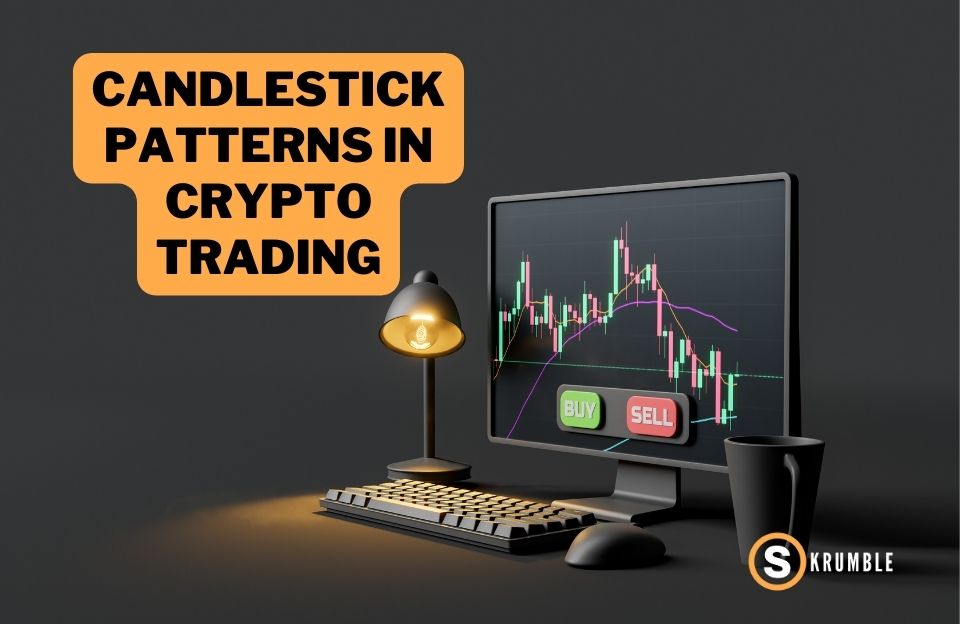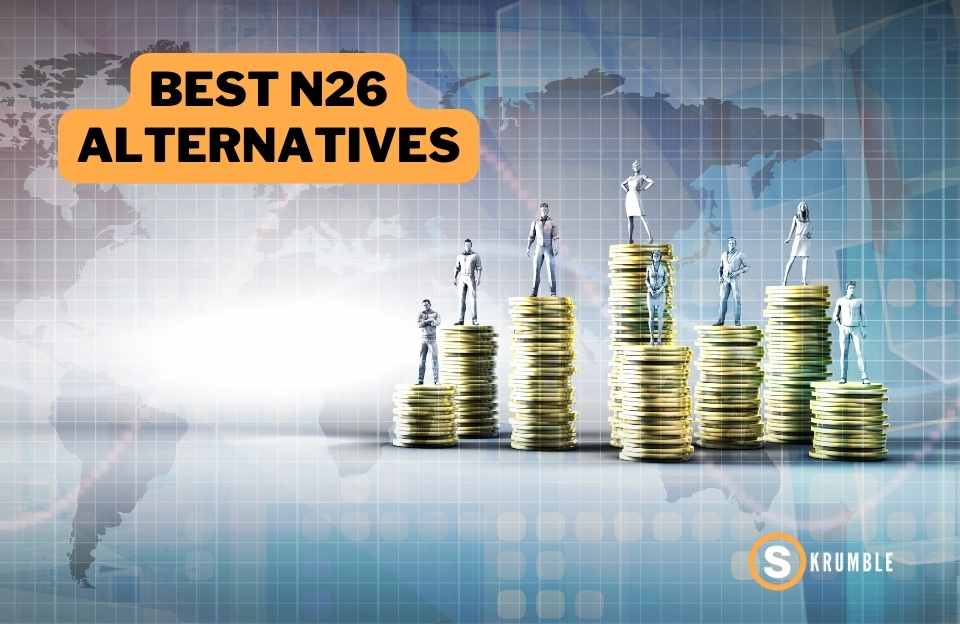Luis Clark
- Home
- /
- Guides
- /
- Intermediate
- /
- What are Take Profit...
What are Take Profit and Stop Loss and How to Use Them
Luis Clark
Trading in financial markets such as stocks, commodities, Forex, and also crypto can be a gratifying experience for many, but it also comes with many risks and challenges. Oftentimes, traders attempt to anticipate future market price levels based on the current price and past performance of these stocks to find the most suitable price for purchasing and selling assets.
For this reason, it is essential to know when to exit the market. In this context, stop loss and take-profit are the predetermined target price that traders set. This article will examine these two risk management tools, how to use them, and their benefits and challenges.
What are Stop Loss Orders?

A stop loss order is a price level formerly decided to help most traders from facing larger losses later. It is an automatic program where once a stop loss order has been set, it will not be activated unless the market price exceeds the already determined stop loss price.
This order is implemented in the form of a market order to make sure that the position is closed close to the set price level. Professional traders do not have to worry about liquidation. They can focus their energies on other tasks using a stop loss order instead.
Types of Stop Loss Order
Different situations call for different types of stop loss orders to be implemented. The various stop loss order types include sell stop order, trailing stop order, and stop limit order.
Sell Stop Orders and Stop Limit Orders
Sell-stop orders are utilized to sell an asset at the market price once it has reached a particular price. They are also called stop market orders, and once the stop price level has been surpassed, a sale is made on the cost price of the asset at that particular point in time.
While mostly applying the same idea as sell stop orders, a stop limit order differs in its execution. A limit sell order is placed here instead of selling the asset at the market price. This ensures that the order will be executed only when the set price limit has been achieved.
This affects the overall popularity of these orders compared to sell stop orders, as these orders are rarely completed. Even a sudden drop in price level leaves the order unexecuted, and traders can be stuck in a damaging downward trend. Sell-stop orders guarantee asset sale at the best possible price, which isn’t guaranteed with a stop limit order.
Trailing Stop Loss
This is the type of stop loss order that is gaining the most traction these days. Trailing stops will utilize a locked percentage that is less than the price level in the market, making only upward adjustments. A trailing stop loss order is primarily used by trend traders looking to extend the lifespan of their position and eliminate the need for constant adjustment of the stop loss placement.
What are Take-Profit Orders?

Take-profit orders are the exact opposite of stop losses. A take-profit order is used in many trading situations, such as when traders are attempting to make capital gains following major price movements or in range-bound market conditions where variation in support and resistance levels becomes beneficial.
A trader will select the appropriate take-profit level in advance to secure profits once the set price is met or exceeded. After deciding the take-profit levels, they will also determine if they want a portion or the entirety of their open position to be closed when the price is matched.
A sale will be carried out automatically once the value is reached to maximize profits. Stop loss and take-profit orders are implemented this way, forming a comprehensive risk management strategy that focuses on potential rewards and protection from volatile markets.
Understanding Stop Loss and Take-Profit and their Impact on Crypto

Many benefits accompany the adoption of stop loss and take-profit orders that make the trading process far more lucrative and reduce the risk level that comes with it. Stop loss and take profit orders have similar functionality in crypto as other financial sectors. However, their value is magnified due to the unpredictability of the cryptocurrency landscape.
Crypto trading can be a very emotional endeavor, particularly during rapid price fluctuations. The presence of stop loss strategies and specific profit targets makes it less likely for you to make emotional decisions regarding exit from trades.
Trades frequently become trapped in an extended downward cycle. Still, they may rise in value later and earn significant revenue for the investor. You could also lose out on profitable trades due to early exits or leaving a transaction running longer than you should have. Having proper trading goals helps you avoid these potential losses.
It is generally agreed that crypto features more significant risks than traditional trading due to quick price changes and market irregularity. Stop loss and take profit orders make it possible for you to sustain robust risk management techniques and minimize potential losses while maximizing rewards on these trades. These tools further allow you to conduct a technical analysis to determine the risk and reward ratios, i.e. the degree of risk you are willing to take to get a particular reward. The greater the reward ratio, the more lucrative the trade; the lesser the risk ratio, the less likely the exchange will go sour.
These tools have also made monitoring market conditions a lot easier. Digital currency markets are operating non-stop, and the prices can shift anytime. You no longer need to sit at your screen and stare at a price chart daily to decide when to leave a trade. You can set your stop loss, take profit orders, and continue with other activities, thus, saving time and effort.
The constantly changing landscape of cryptocurrency comes with many challenges, but it also presents multiple opportunities to create financial gains. Take profit orders ensure that traders can take advantage of these opportunities and get rewarded for their efforts because of favorable price changes in this otherwise volatile environment.
These stop loss and take profit tools are entirely free for you to use. Most trading platforms make them available to investors and traders as entirely free tools. Still, some exchanges might require a subscription fee for you to access more complex order types.
What are the Strategies for Stop Loss and Take Profit Order Target Selection?
Many factors must be considered when deciding your stop loss and take profit orders and the respective trading strategy to implement them. Trade volatility and price inconsistencies are some of the factors you will have to look into.
Setting the values where they can be triggered automatically by sudden market discrepancies can turn your winning trades into losses. You will have to look into the overarching market status with the help of tools such as support and resistance, price actions, and technical indicators.
Support and resistance techniques are essential for determining the ideal price levels when there are chances of a price rebound. A support level will prevent the trade from dropping below a specific price. On the other hand, a resistance level will not allow a trade to go over and above a particular price.
Stop loss is placed beneath the resistance, taking profit orders above the support in the short position. However, in the extended position, the stop loss order is supposed to be placed above the support levels. In contrast, the take-profit orders are supposed to be stay behind the resistance levels.
You can also use technical analysis of the volatile markets to decide where to put your stop losses. Utilizing the average true range indicator, you can determine the unpredictability of the crypto market and set the stop loss where it is improbable for the market to reach. For instance, being aware of the average market movement is also beneficial in deciding where to place the take profit order.
Another straightforward risk management strategy for stop loss placement is risk per trade. This strategy requires you to select how much you will sacrifice with every trade you make. Determining your take profit through this practice requires a price level that produces more extensive gains than probable losses. A specified risk-to-reward strategy makes this easier.
You can also use various trading indicators to decide where to set your stop loss and take profit orders, such as moving averages, Bollinger Bands, and relative strength index, that help you determine where to place your stop loss and take profit orders.
Vital Tools for Risk Management
Stop loss and take profit orders are vital tools for risk management, helping traders to improve the efficiency of the overall trading experience. Having a more comprehensive understanding of how they function, placing them at the right spot, and selecting the right trading strategy to use with them allows investors and traders much financial security and access to significant capital gains.
You are now also aware of the impact they have on trading practices and all their benefits. This awareness will help you to decide if stop loss and take profit are right for you and how you would want to use them.
FAQ
Most frequent questions and answers
First, select an appropriate cryptocurrency offering to stop loss and take profit orders. Once you have made your choice, you will locate the order placement section of the exchange interface. You will then select the currency pair you want to trade and whether you wish to buy or sell it.
Next, select the type of order based on market and limit order conditions. Following this decision, you must set the amount of cryptocurrency you want to trade. You will finally set your stop loss and take profit orders, and hit the submit button to complete the order placement.
The 1% rule is a predetermined maximum loss per trade. The law states that the cost of the trade should always equate to 1% of your trading capital.
Contract for difference is a financial trading tool typically witnessed in an agreement between brokers. It is based on leverage and gives traders a chance to make money based on the difference in the price of a position when it is opened and closed.
CFDs allow users to simultaneously open long and short positions and avoid extensive risks when trading. Some popular platforms for trading CFDs include IC Markets, Plus500, FX Pro, Octafx, BYDFi, Bybit, and Binance.
Let us assume that you have just bought one Bitcoin for $60,000 under the assumption that its price will increase in the future. Even with this expectation, you want to protect yourself against possible losses.
Therefore, you set up a stop loss order at $56,000. This means that if there is a drop in the price of the Bitcoin to or below $56,000, the stop order will be set into motion, hence, closing your open positions automatically. This will safeguard you against any significant or even entire losses.
The 6% rule is a popular trading practice that is utilized most notably in the stock market. It states that the trader will set the stop loss at a price level 6% below the entry price.
Skrumble.com provides all its content for informational purposes only, and this should not be taken as financial advice to buy, trade, or sell any investment instruments or products, including but not limited to cryptocurrencies, or use any specific exchange. Please do not use this website as investment advice, financial advice, or legal advice, and each individual’s needs may vary from that of the author. Investing in financial instruments, including cryptocurrencies, carries a high risk and is not suitable for all investors. It is possible to lose the entire initial investment, so do not invest what you cannot afford to lose. We strongly advise conducting your own research before making any investment decisions. This post includes affiliate links with our partners who may compensate us.
To view our privacy policy read here.






